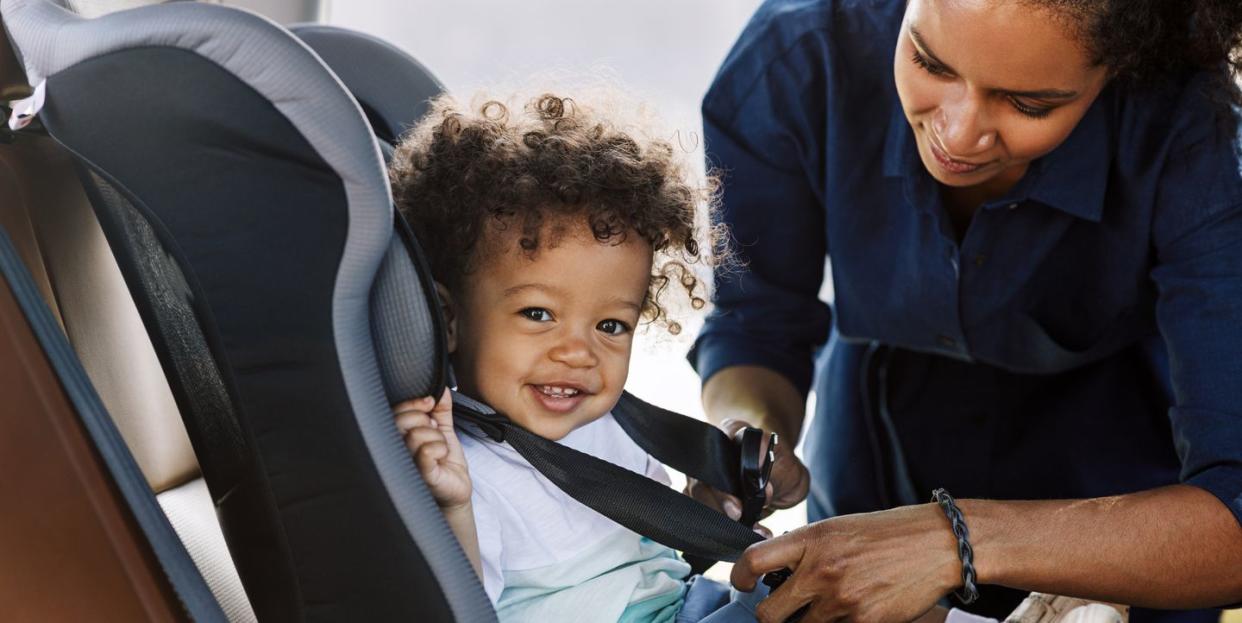10 travel sickness prevention tips for children

Travel sickness (also known as motion sickness) is caused by repeated movements when travelling, like bobbing up and down in a boat or going over bumps and round bends in a car. The inner ear sends different signals to your brain from those your eyes are seeing and these can cause you to feel unwell. Lots of toddlers and children suffer from travel sickness but with a few simple tips you can minimise discomfort.
Dr Roger Henderson looks at travel sickness in children symptoms, prevention and treatment tips:
What is travel sickness?
Travel sickness is caused by the brain receiving conflicting signals from the eyes and ears. When moving, our eyes send messages to the brain about our position but the balance centres in our inner ears send different signals. So, if you are reading a book in a moving boat your eyes see a stationary book but your balance mechanisms are saying that you are moving.
It need not always be movement that triggers symptoms either as other potential causes of travel sickness include:
Smells.
Frequent head movements, such as when travelling on roads with lots of bends.
Focusing on nearby objects, such as books or screens.
Lots of children suffer from travel sickness although it often does not to start until around the age of two years old and between the ages of 2 and 12 is usually when it tends to occur.
Travel sickness symptoms
Symptoms can range from mild to serious, and can include:
Dizziness
Feeling unwell
Excessive saliva production
Feeling sick and vomiting
Burping
Sweating
For most children the usual pattern is they begin to feel unwell along with having some discomfort in their stomach, followed by an increase in saliva causing them to dribble. They then feel hot, start to look pale, and then finally vomit. This can happen a very short time into a trip or after an hour or two.
Travel sickness in children prevention tips
Fortunately there are a number of ways to help make a journey much less stressful for both you and your child:
1. Time your journey
Try to time your journey carefully as travel sickness is less likely if your child is sleeping. This might involve a very early start but many parents find it is worth it! Try putting your child to bed before you start your journey then transferring them into the car without waking them up. If you are travelling in the day, try co-ordinating setting off with your child’s nap time as they will then often fall asleep after a few minutes of travelling!
2. Don't feed your kids just before travel
Whenever possible, try not to feed your child just before travelling.
3. Keep the car ventilated
Keep your car cool and well ventilated – open the windows if possible - and make sure your child is not too warm.
4. Eyes on the horizon
Although it can be tempting, try not to distract your child with books or computer games, as reading or looking at a screen can make travel sickness worse. Instead, try to encourage them to focus forwards on objects on the horizon by playing games like ‘I Spy’.
5. Avoid strong smells
Always avoid strong smells in the car (including food). Don’t wear strong perfume or use car air-fresheners, and never smoke in the car with your toddler, even with the windows open. This not only exposes them to the risks of passive smoking but can make travel sickness worse. The Children and Families Act 2015 made smoking in cars with children an offence - the law makes it clear that it’s illegal to smoke in a private vehicle with someone under age 18 present.
6. Use a sun shade
Try putting a protective sun-shade on the window on your child’s side of the car to help keep them looking forwards and also protect them from bright sunshine.
7. Use music as a distraction
Music can be a great distraction here. If your toddler is familiar with particular pieces of music they are more likely to be distracted from feeling ill – even if you have heard it hundreds of times before!
8. Head support is key
Try to prevent your child’s head from moving too much by making sure it is well-supported.
9. Do your pre-travel prep
If you have a child who suffers regularly from travel sickness, always be prepared for this by taking towels with you on your journey, and putting one over the car seat then one over them before setting off. Remember to pack a spare set of clothing as well as some plastic bags to put any soggy clothing and towels in, as well as wipes to freshen up if needed.
10. Persistant pays!
However tempting it might be, try to resist the temptation to stop travelling whenever possible. There is some evidence that travel sickness symptoms do seem to reduce if there is frequent exposure to travelling, and the majority of children do grow out of travel sickness.
Travel sickness in children treatment tips
Hyoscine is usually the most effective medicine for motion sickness (it is also known as scopolamine) and works by preventing confusing nerve messages going to the brain. There are several brands of medicines which contain hyoscine including soluble forms for children. These can be purchased over the counter from a pharmacist, for children who are two and over and these are very effective. Ask your pharmacist about these and they will advise you as to which ones are suitable for your child.
Other remedies such as ginger preparations (such as biscuits) and acupressure bands can be helpful although these do not work in all cases.
Last updated: 24-06-2021
You Might Also Like


